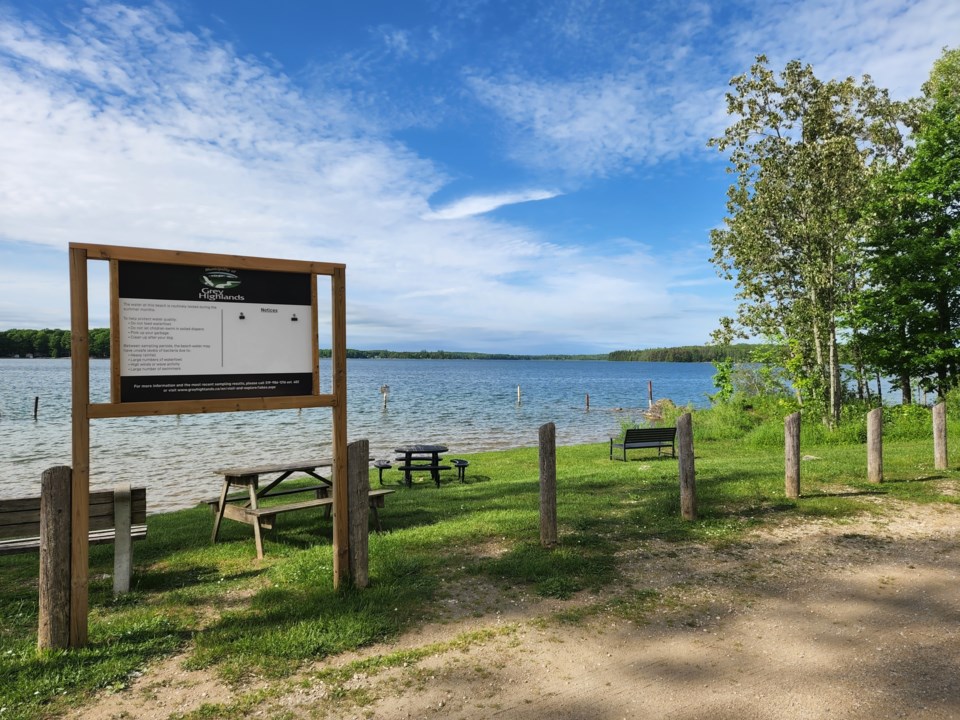The Friends of Lake Eugenia have asked Grey Highlands council to implement mandatory septic inspections for properties around the popular lake.
The friends group was a delegation at council’s meeting on June 19 and made a presentation about their efforts to fight a high level of toxic blue algae in Lake Eugenia.
Doug Hill and Morgan Anderson spoke to council at the meeting and made several suggestions for how the blue algae issue can be fixed.
One suggestion from the friends is mandatory septic inspection regulations to ensure that runoff from private septic systems is not entering the lake.
“Please implement septic regulations. We’ve talked about this before. We’re hoping now is the time,” said Anderson.
The friends group has been working with Hutchinson Environmental Services and the Grey Sauble Conservation Authority to study the blue algae problem.
“The study found that a combination of increased global temperatures coupled with phosphorus resident in the lake are the primary causes of issues experienced,” Anderson said. “Lake Eugenia suffers from an excess phosphorus load that fuels toxic algae growth. This is the result of over one hundred years of accumulation in sediment located in the deep area in front of the dam. The release of this phosphorus, triggering algae growth, has accelerated in recent years due to warmer temperatures and shorter ice seasons.”
The friends group also suggested that the municipality consider raising a culvert located at Plantts Point that drains directly into the lake. Hill said the culvert is set very low and flows right into the lake.
“It is denying the opportunity at that culvert to provide a holding area,” said Hill, who said raising the culvert would allow an area for the water to settle. “The fixes are relatively simple and could be handled on a municipal level. You could have the best of both worlds. You could have a settling pond in place and you could have the road protected.”
The group is also studying the possibility of applying alum to the issue. Alum is a binding agent for sediment resident phosphorus that is a non-toxic method to fight the problem. Hill said alum has been used in other jurisdictions and would require approval of the Ministry of the Environment.
Anderson said the friends group is asking that council support their efforts to make changes to improve the health of the lake.
“Our hope today is that you will see this as an opportunity to make some changes that can have a very positive effect on the health of the lake and the watershed today and in years to come,” she said.
Council did not take any action on the presentation, other than to receive it for information.
